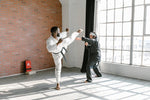
Best Recovery Tips After Martial Arts Training
, by Sandesh Prasannakumar, 5 min reading time
Stay tuned, Your Favourite supplements will be back in stock soon!
Stay tuned, Your Favourite supplements will be back in stock soon!
Stay tuned, Your Favourite supplements will be back in stock soon!
Stay tuned, Your Favourite supplements will be back in stock soon!
Stay tuned, Your Favourite supplements will be back in stock soon!
Stay tuned, Your Favourite supplements will be back in stock soon!
Stay tuned, Your Favourite supplements will be back in stock soon!
Stay tuned, Your Favourite supplements will be back in stock soon!
Stay tuned, Your Favourite supplements will be back in stock soon!
Stay tuned, Your Favourite supplements will be back in stock soon!

, by Sandesh Prasannakumar, 5 min reading time
Martial arts training is a rigorous activity, and during training sessions, the human body undergoes severe strains that result in muscle stiffness, fatigue, and high susceptibility to injuries. This is why having a good recovery plan after working out is important so you can push your body hard again in the next session. Here are some scientific ideas to enable you to recover after training in martial arts or combat sports as soon as possible.
Martial arts training involves more rigorous physical movements, and as a result, the participants end up sweating and, therefore, losing fluids and electrolytes. It’s also important not to wait until after training to rehydrate, as this can delay recovery. Replenish the weight in ounces to the pound you sweated with fluids. If possible, choose a drink with sodium and potassium to replenish the body and its fluids much faster.
Martial arts primarily rely on carbohydrates within the body as their energy source. Consuming these energy supplies immediately after training proves beneficial in the recovery process. Ideally, eat carbs and protein in a 1:3 or 1:4 ratio in the same 30-60 minutes after a training session. A few tasty ideas are chocolate milk, protein powder smoothies, eggs and toast, or yoghurt with fruits and nuts added to it. The carbs replenish glycogen stores, while the protein is vital in muscle tissue repair and building.
Ice baths minimise inflammation and muscle soreness through vasoconstriction, decreasing tissue temperature, and lowering cell metabolic rate. Submerge your body in cool but not cold water, 50 to 60°F, for about 10 – 15 minutes in the next hour after your martial arts training. This tip means you will get the best out of your recovery if you interchangeably use hot and cold water. Contrast water therapy helps improve the circulation of nutrients to weary muscles through blood flow.
Exercise, the best contender, is excluded as sleep facilitates physical healing and mental rejuvenation. Getting not less than 7-9 hours of a good night's sleep is necessary. If you need to rest during the day, try to have short, 20-30 minute power naps. Martial arts are intense on the muscles, connective tissues and joints; hence, you should heed the body’s signals to rest and recuperate after strenuous sessions on the training mats. As for the rest days, moderate exercises such as walking, biking, and the like, or even doing some simple yoga, help blood circulation without exerting too much effort.
After the most intensive martial arts training sessions, sports massage is helpful and relaxing. Another benefit of massage is an improvement in circulation – necessary for delivering nutrients and oxygen to muscle tissues and repairing damaged tissue and removable products. It also helps reduce soreness, effectively decreasing the tension in overworked muscle groups. Sports massage should be frequently applied to areas most stressed during training, such as the shoulders, the neck and the back.
This is why it is critical to have systemic & proactive recovery plans relating to your training needs to ensure the healthy development of martial arts while enhancing skills over time without unnecessary aches and pains or burnout. It is paramount to adhere to correct nourishment and fluid intake, adequate recovery time and proper treatment of exercised muscle groups.
For all your protein and supplement needs, visit Genetic Nutrition!
Q1: What is part of the recovery procedure before bed?
Getting an Epsom salt bath, which helps the skin absorb magnesium, thus relaxing muscles, foam rolling because it helps release muscle tightness, practising meditation or deep breathing since the central nervous system slows down to reduce stress, avoiding electronics at least 1-2 hours before bed, and taking a pre-bedtime snack like tart cherry juice and turkey/cottage cheese since it has compounds that promote sleep.
Q2: How many times a week should you get the sports massage for martial arts recovery?
If you are training intensively 2-3 times a day, most experts suggest that you undergo sports massage 1-2 times a week at least. The frequency can be modified constructively regarding one’s recovery requirements or the intensity of the workout routine. Percussion massage within 24-72 hours after sharp training or competitions when DMO soreness peaks in hardcore martial arts practitioners.
Q3: Should one continue training martial arts when the body aches?
The phenomenon is okay if one is slightly tired after martial arts training and performs a low-intensity workout the following day. This will enable blood to circulate in muscles to promote quicker recovery from injury. However, if it is becoming more serious with intense and prolonged soreness and pain combined with loss of strength and flexibility, then rest more. Acute muscle inflammation and muscle damage elevation are significant factors that contribute to a higher risk of injury. Train your mind to be sensitive to the discomfort, cut back on the intensity of your workouts for some time, and engage more in active rest and rehabilitative exercises until the discomfort disappears before going hardcore again.